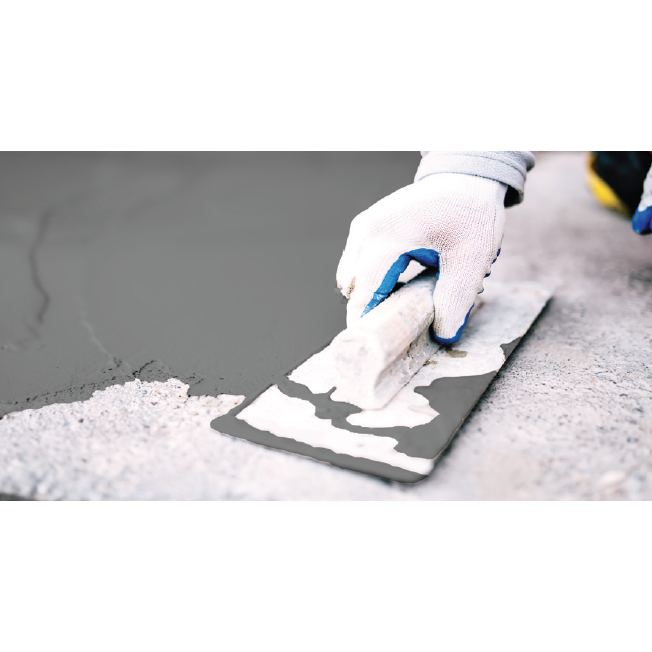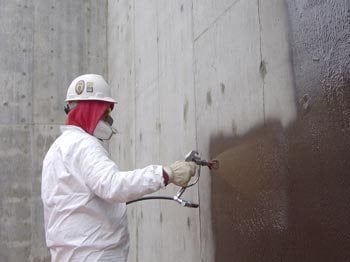Top 10 Reasons to Prioritize Basement waterproofing Omaha for a Safe Living Space
How Waterproofing Works: An In-depth Look at Strategies and Technologies
Waterproofing is necessary for securing frameworks from moisture-related damage. It involves various techniques and innovations that create obstacles versus water breach. Typical approaches, such as compacted clay, coexist with modern-day advancements like liquid-applied membrane layers. Comprehending the subtleties of these techniques is crucial for reliable application. The efficiency of any type of waterproofing service pivots not only on the strategies utilized but also on continuous upkeep and inspection. What are the vital elements that influence long-term efficiency?
Understanding the Fundamentals of Waterproofing
Waterproofing is a vital process that safeguards frameworks from water breach, which can bring about significant damages over time. This approach includes the application of numerous materials and techniques designed to develop a barrier versus dampness. The main objective is to stop water from permeating surfaces, which can create deterioration, mold development, and architectural instability.Various factors influence the selection of waterproofing method, consisting of the kind of structure, its place, and ecological problems. Understanding the physics of water movement and the residential properties of different materials is vital in picking an effective waterproofing solution.Effective waterproofing not only safeguards structures however additionally boosts their longevity and integrity. Typically, it is integrated right into the layout phase of building to assure thorough defense. As awareness of water-related concerns expands, the significance of understanding waterproofing principles ends up being significantly clear to engineers, home builders, and homeowner alike.
Conventional Waterproofing Techniques
Traditional waterproofing approaches have actually been used for centuries, depending on reliable techniques and materials to secure frameworks from water damages. One of the oldest approaches entails the use of clay, which, when compressed, develops a natural obstacle versus wetness. Furthermore, asphalt, a sticky, black product stemmed from oil, has actually been utilized for its waterproof properties, often put on roofing systems and foundations.Another method entails the application of lime-based plasters, which give a breathable layer that allows wetness to get away while preventing water ingress. Thatch roof covering, a standard technique still seen in some cultures, offers superb waterproofing due to its securely packed straw layers.Moreover, making use of stone and brick has actually projected, as these materials are inherently immune to water when effectively set up. In general, standard waterproofing approaches emphasize the value of choosing suitable materials and construction practices to enhance sturdiness against water invasion.
Modern Waterproofing Technologies
Improvements in contemporary waterproofing modern technologies have changed the way frameworks are safeguarded from water damage. Cutting-edge strategies such as liquid-applied membranes and sophisticated sealants have improved the efficiency and convenience of waterproofing solutions. These innovations enable for smooth application, minimizing the risk of leaks and ensuring extensive protection over complex surfaces.Moreover, the assimilation of wise innovations, such as moisture sensing units and automated monitoring systems, makes it possible for real-time analysis of waterproofing efficiency. This proactive strategy helps with timely maintenance and decreases lasting fixing costs.Additionally, improvements in spray-applied coatings supply fast application and exceptional adhesion, adjusting to various substrates while supplying robust protection. Techniques like polymer-modified systems better enhance flexibility and toughness, making them ideal for diverse atmospheres. Overall, contemporary waterproofing technologies not just mitigate water intrusion yet additionally add to the long life and sustainability of structures, marking a considerable shift in the sector.
Products Used in Waterproofing
The performance of waterproofing solutions heavily depends on the materials utilized in their application. Various materials are used to develop barriers versus water access, each with unique homes suited for different settings. Typically utilized products consist of membrane layers, coatings, and sealants.Liquid-applied membranes, typically made from polyurethane or acrylic, form a smooth obstacle that adapts to intricate surface areas. Sheet membranes, usually constructed from rubber or thermoplastic, offer sturdiness and are perfect for larger locations. Furthermore, cementitious waterproofing materials, water proofing roof composed of cementitious compounds, supply superb attachment and flexibility.Sealants made from silicone or polyurethane are vital for joints and joints, guaranteeing detailed security. Furthermore, sophisticated materials, such as geo-composite membrane layers, combine numerous functions, boosting performance. In general, the choice of waterproofing products is important in achieving durable and reliable water resistance, customized to details project demands and ecological conditions.
Common Applications of Waterproofing
Waterproofing plays an essential role in various markets, ensuring the long life and integrity of frameworks. Usual applications consist of household services that secure homes, business framework that safeguards businesses, and industrial setups that need durable defense against wetness. Recognizing these applications highlights the relevance of waterproofing in preserving both security and performance throughout different environments.
Residential Waterproofing Solutions
Lots of home owners encounter difficulties with wetness intrusion, making efficient residential waterproofing remedies vital. Different methods exist to address this problem, including inside and exterior waterproofing systems. Interior remedies typically involve the application of sealers and coatings to basement wall surfaces, which aid prevent water seepage. Outside techniques generally consist of the installation of water drainage systems and water-proof membranes that divert water far from the foundation.Additionally, home owners might think about sump pumps to eliminate water accumulation and dehumidifiers to regulate moisture levels. Proper grading and the usage of gutters likewise play a vital function in handling water flow around the home. By executing these approaches, house owners can considerably minimize the danger of water damage and mold and mildew development, making sure a dry and safe living atmosphere.

Industrial Facilities Security
Reliable waterproofing services play a vital function in the protection of business framework. Water Solutions Omaha. These strategies are vital for safeguarding structures, auto parking structures, and bridges from water damages, which can compromise structural integrity and cause expensive repair work. Common applications consist of the installment of membrane layers, finishings, and sealants that produce barriers against moisture infiltration. Locations such as cellars, roofing systems, and outside wall surfaces are commonly focused on to assure long life and sturdiness. Furthermore, waterproofing systems can improve power efficiency by avoiding water-related problems that might bring about mold development and wear and tear. By applying robust waterproofing actions, building proprietors can protect their investments and maintain functional performance, try these out inevitably adding to the overall sustainability of industrial facilities
Industrial Applications Summary
While numerous fields encounter special difficulties, the demand for trusted waterproofing remedies remains a consistent in industrial applications. Industries such as manufacturing, construction, and energy commonly experience settings where moisture exposure can threaten architectural integrity and operational efficiency. In manufacturing centers, waterproofing is vital for securing machinery and materials from water damages. In building, it safeguards foundations and cellars versus groundwater seepage. The energy market relies upon waterproofing for the defense of devices in hydroelectric plants and overseas structures. In addition, food handling markets use waterproofing to assure hygiene and conformity with security requirements. Overall, effective waterproofing remedies are necessary for enhancing resilience, security, and performance throughout various commercial setups.
Upkeep and Durability of Waterproofing Solutions
Waterproofing services are made to supply long-term defense versus wetness breach, normal maintenance is crucial to assure their efficiency and long life. Routine evaluations play a significant role in identifying possible concerns such as splits, peeling, or signs of water damage. Dealing with these troubles immediately can protect against additional deterioration and costly repairs.Additionally, cleaning up the surface of waterproof areas helps eliminate dust and particles that could jeopardize the stability of the waterproofing barrier. It's likewise suggested to reapply safety finishings or sealants as suggested by producers to maintain perfect efficiency. Environmental variables, such as UV direct exposure and extreme weather, can affect the life expectancy of waterproofing products, making regular analysis important
Often Asked Questions
Can Waterproofing Be Applied in Cold Weather?
The question of applying waterproofing in winter elevates worries concerning attachment and healing. Many items may not do at their finest in low temperatures, demanding careful choice and consideration of details standards for effective application.
The Length Of Time Does Waterproofing Commonly Last?
The duration of waterproofing performance differs based on products and environmental factors. additional resources Generally, it can last from 5 to 10 years, yet normal maintenance and evaluations are necessary to guarantee peak performance and durability.
Is DIY Waterproofing Effective and Safe?
The performance and safety of DIY waterproofing rely on different elements, including material high quality and application technique. While some individuals accomplish satisfactory results, others might come across concerns that endanger long-lasting protection and structural integrity.
What Are the Indications of Failing Waterproofing?
Indicators of falling short waterproofing consist of visible water spots, peeling off paint, mold and mildew development, musty smells, and wetness in wall surfaces or ceilings - Water Solutions Omaha. These indications suggest endangered obstacles, demanding timely inspection and prospective removal to stop more damages
Just how Do I Pick the Right Waterproofing Service Provider?
